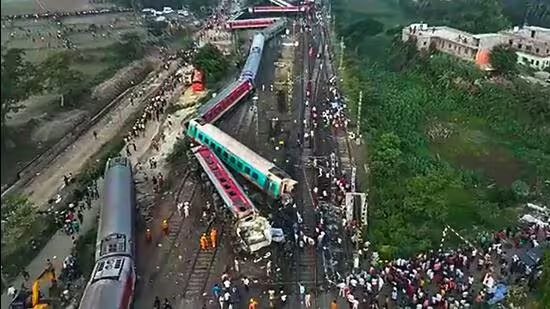Going off track?

The lethal train collision in the Balasore District of Odisha presents a disheartening reiteration of the pathetic state of safety protocols in Indian Railways. The accident, killing nearly 300 people and injuring around a thousand, indicates how little progress has been made in the direction of minimising train accidents in the country. India had witnessed its deadliest train accident in 1981 when several bogies of an overcrowded passenger train derailed from a bridge to fall into the Bagmati River in Bihar — killing around 800 people, as per conservative estimates. Reports suggest that 1981 alone saw more than 500 train derailments! More than four decades later, the situation stands back to square one. In the intervening period as well, deadly train accidents have regularly rocked the public conscience — throwing reminders which concerned authorities have been unwilling to take seriously. Seven years after the Bihar rail tragedy, the Peruman railway accident in Kerala claimed over 100 lives. Another seven years, and a train collision in Firozabad, Uttar Pradesh, in 1995, killed more than 350 passengers. Again in 1999, more than 300 people were killed in a head-on collision between two trains in Gaisal, West Bengal. In the high-tech 21st century as well, the spree of train accidents continues unabated. Still fresh in memory is the 2018 accident in Amritsar where a train ran through the crowd, killing 59 people. The persistence of such incidents is evidence that lessons have not been learnt to date. In the present case, the root cause, as indicated by the primary inspection note, appears to be the signal failure. The accident affected three trains — the Coromandel Express, Sir M Visvesvaraya Terminal Bengaluru-Howrah Express and a goods train. The two passenger trains were headed in different directions — one to the Up main line and the other to the Down main line — while the goods train was standing on the loop line meant to accommodate more trains and thus ease operations. Due to an apparent ambiguity in signalling, the Coromandel Express entered the loop line and slammed into the goods train. The collision indirectly affected several bogies of the third train in uncertain ways. Primarily, the focus of investigation is to ascertain the signalling failure or find out the fault on the loco pilot’s part. This is an obvious course. But it may be reiterated that neither lethal train accidents nor signal failures are completely strange phenomena in the Indian context. The critical question is what the Central government has done over the decades to prevent such accidents. Post-accident investigations are only partially meaningful as the damage is already done. The Trinamool Congress, which rules the neighbouring state of West Bengal, has raised some pertinent questions. TMC supremo and former Railway Minister Mamata Banerjee accused the BJP-ruled Central government of “neglecting the railways.” Notably, Banerjee is credited with the installation of Anti-collision devices (ACDs) in trains during her term as Railway Minister. She believes that if ACDs were installed in the trains, these accidents could have been averted. The party’s General Secretary Abhishek Banerjee, too, lashed out saying that “somebody has to take responsibility for the death of these people who died due to no fault of their own.” His argument is totally valid, and the blame cannot be narrowed down to the loco pilot or the signal man. Abhishek Banerjee has further rightly demanded that the central government should publish a whitepaper on the funds utilised for installing ACDs in trains. Interestingly, the Kavach system, which is a Safety Integrity Level 4 (SIL-4) certified technology with the probability of error being one in 10,000 years, is a state-of-the-art electronic system which was designed to help the Indian Railways achieve zero accidents. Apart from preventing collision between two Kavach-equipped locomotives, the technology automatically activates the train’s braking system when needed. However, the implementation has been lagging behind considerably. It is time that safety and security of train passengers are prioritised.



